The Economics and Statistics Division maintains archives of previous publications for accountability purposes, but makes no updates to keep these documents current with the latest data revisions from Statistics Canada. As a result, information in older documents may not be accurate. Please exercise caution when referring to older documents. For the latest information and historical data, please contact the individual listed to the right.
<--- Return to Archive
For additional information relating to this article, please contact:
November 09, 2023DEATH COUNTS AND EXCESS MORTALITY, SEPTEMBER 2023 Statistics Canada has provided provisional information on deaths in Canada up to September 2, 2023. This includes deaths attributable to all causes; fluctuations from one week to the next may be attributable to many different causes of death. The data does not include all deaths that occurred during the reference period.
Most provinces have not reported their results up to September 2; only Quebec, Alberta and British Columbia have reported to this date. Information is not complete for recent months in:
Newfoundland and Labrador (to August 12, 2023)
Prince Edward Island (to August 26, 2023)
Nova Scotia (to May 6, 2023)
New Brunswick (to July 15, 2023)
Ontario (to June 17, 2022)
Manitoba (to October 22, 2022)
Saskatchewan (to July 29, 2023)
With limited information from several provinces, national estimates are available up to July 15, 2023.
Previous provisional data have been revised. New data are provisional.
Nova Scotia reported significant excess mortality above the upper bound of expected deaths intermittently over several weeks through the fall and early winter. Since the late winter and spring of 2023, mortality has fallen back in line with expected levels.
Nationally, mortality has recently fallen in line with expected levels. Only in British Columbia and Alberta are there ongoing (but not continuous) episodes of mortality that exceeds the upper bound of expected deaths.
Data from Manitoba and Ontario are lagged by several months.
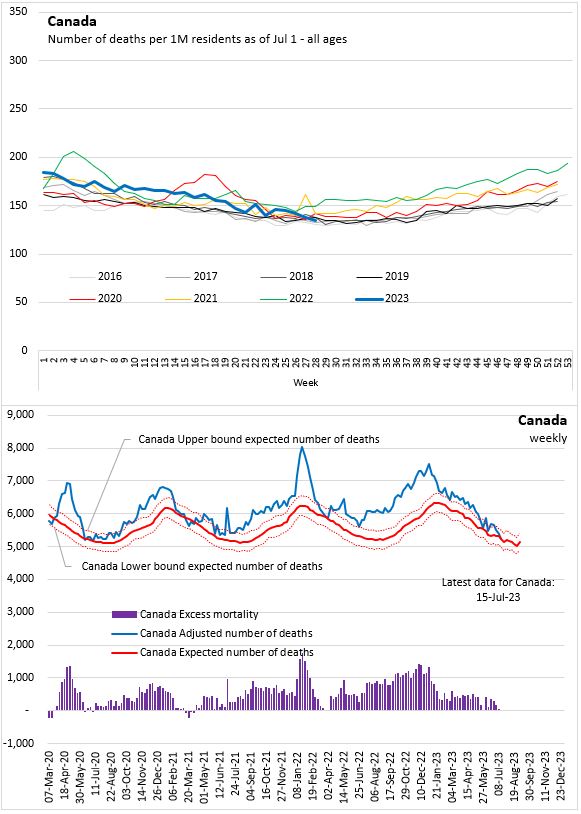
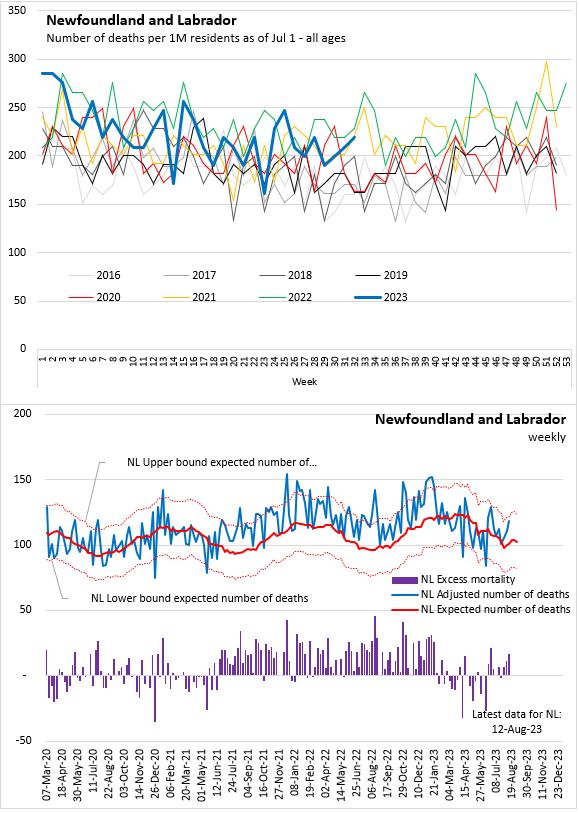
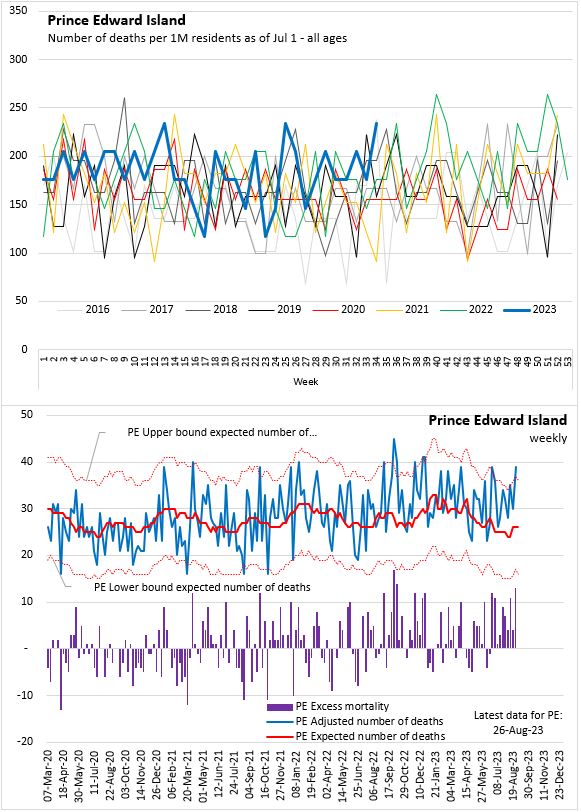
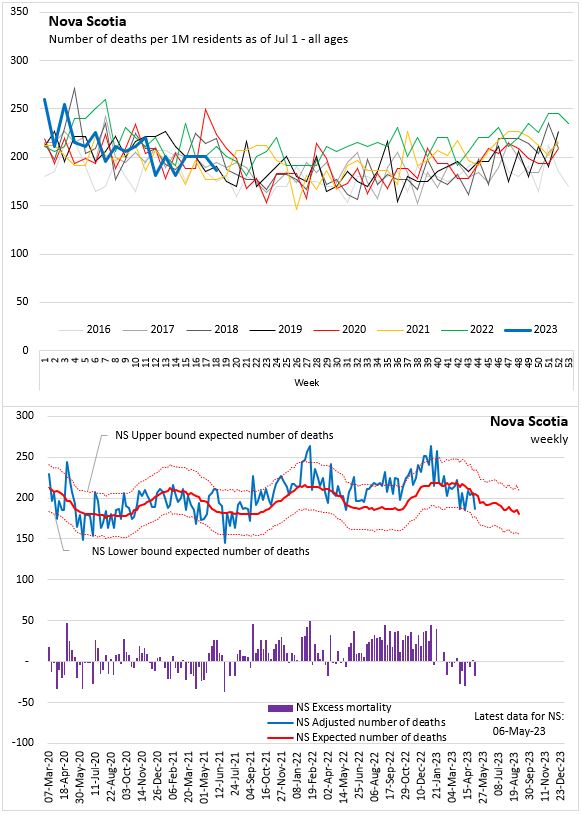
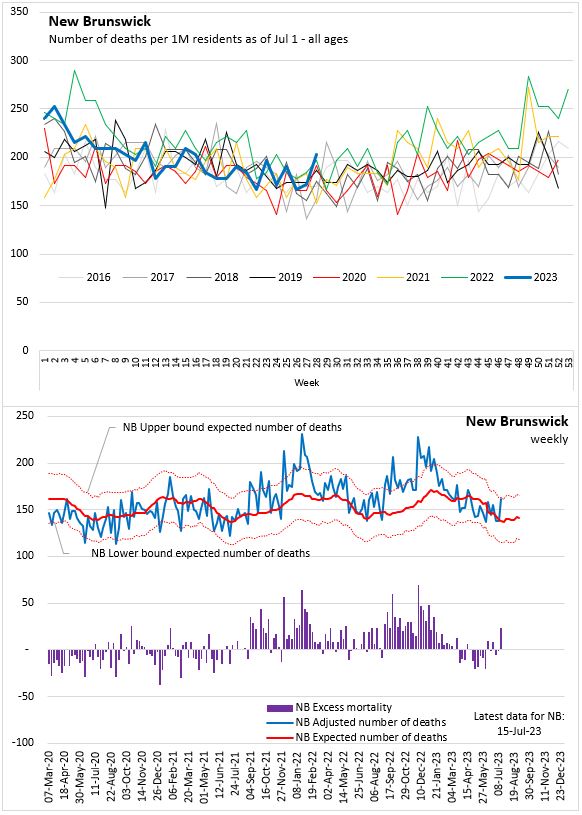
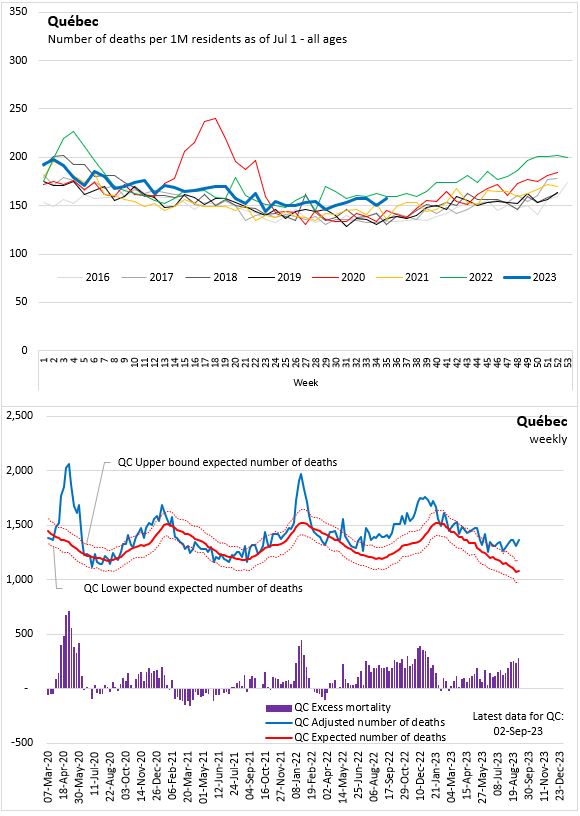
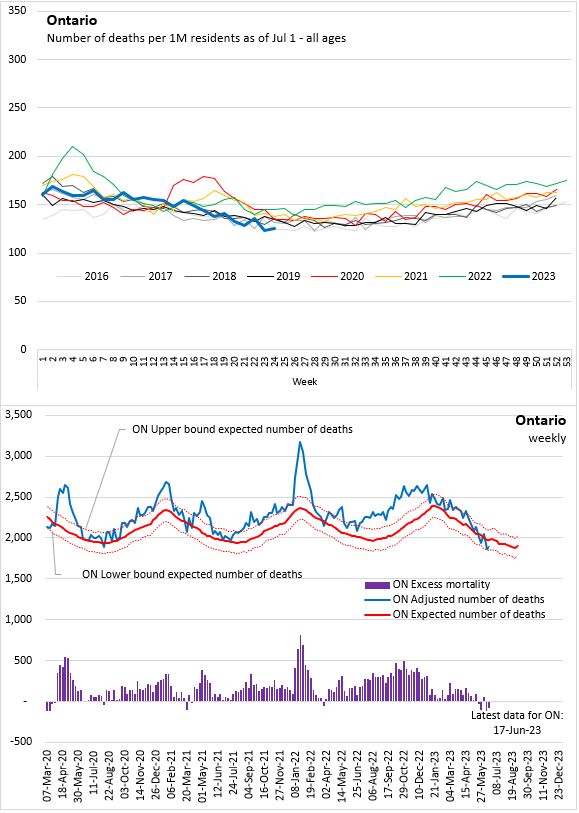
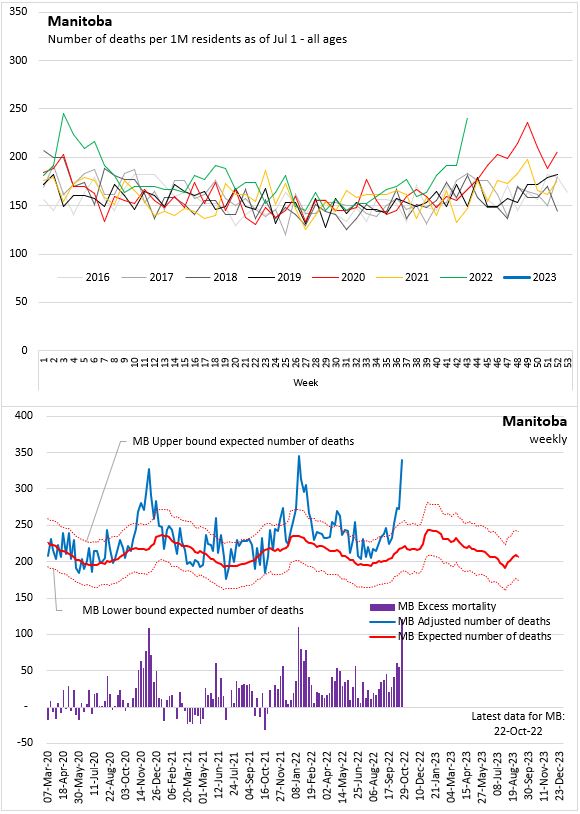
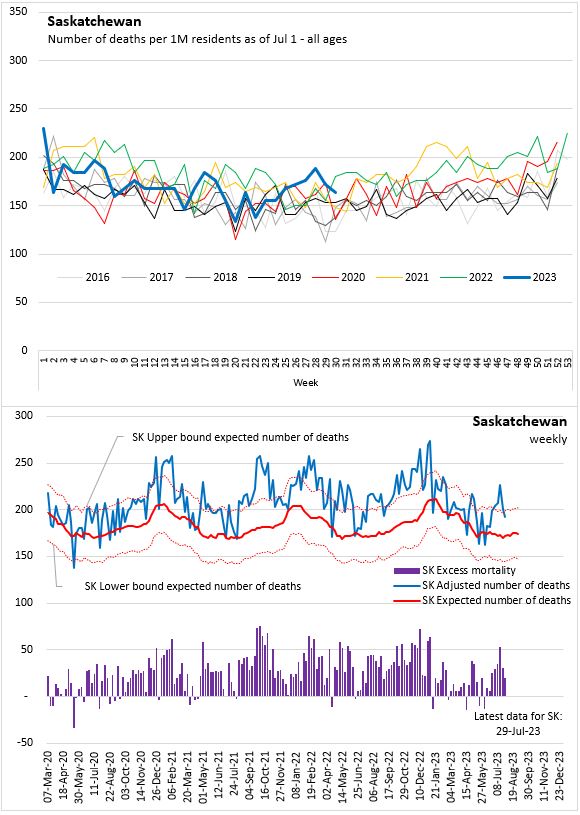
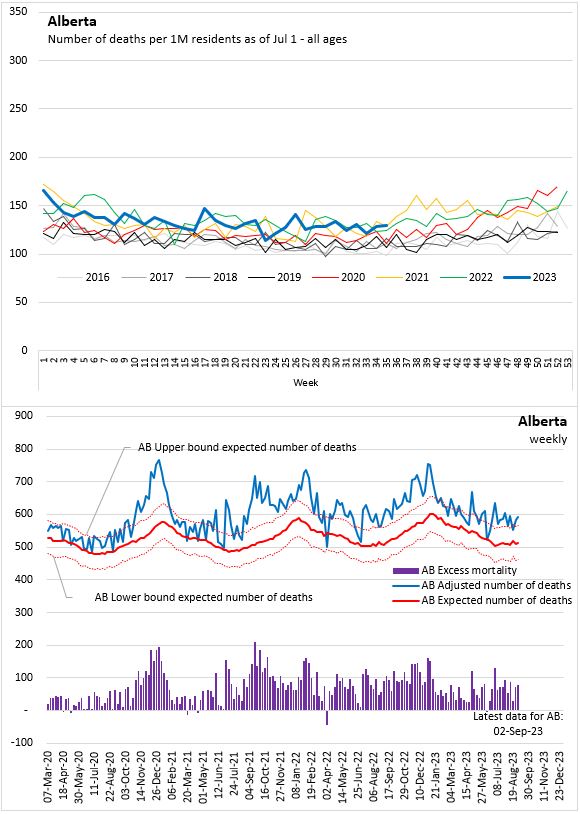
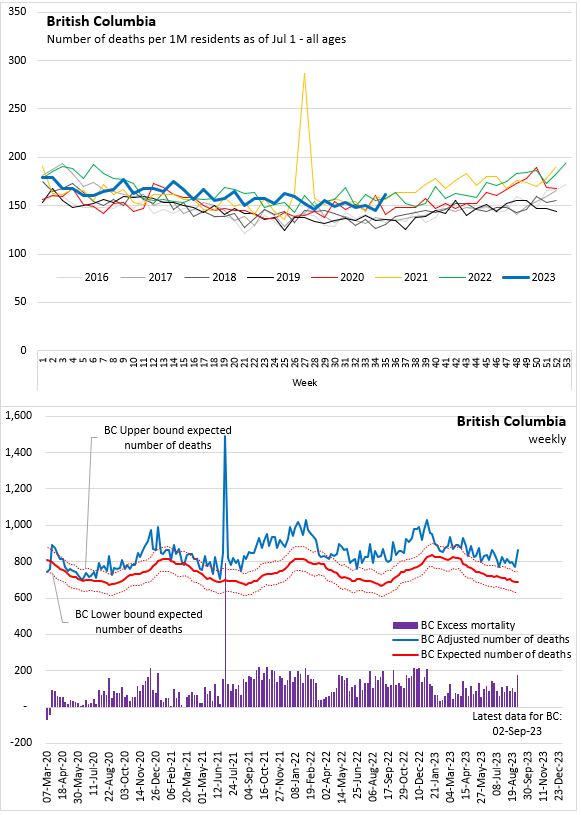
Notes:
Statistics Canada cautions that: "...even without a pandemic, there is always some year-to-year variation in the number of deaths in a given week. As such, the number of expected deaths should fall within a certain range of values. There is evidence of excess mortality when weekly deaths are consistently higher than the expected number, but especially when they exceed the range of what is expected over several consecutive weeks."
Further, Statistics Canada notes that: "There are also several challenges that come with measuring excess mortality, most importantly properly estimating the number of expected deaths that would occur in a non-COVID-19 context as a basis for comparison with current death counts. Significant variations may be observed from year to year in the annual death counts, especially in the least-populated provinces and the territories. Moreover, yearly death counts may be affected by changes in the composition of the population, particularly regarding age and changes in mortality rates (e.g., reduced mortality). In the Canadian context, with an aging and growing population, the number of deaths has been increasing steadily in recent years, so a higher number of deaths in 2021 and 2022 would be expected, regardless of COVID-19."
Source: Statistics Canada. Table 13-10-0768-01 Weekly death counts, by age group and sex; Table 13-10-0784-01 Adjusted number of deaths, expected number of deaths and estimates of excess mortality, by week
<--- Return to Archive